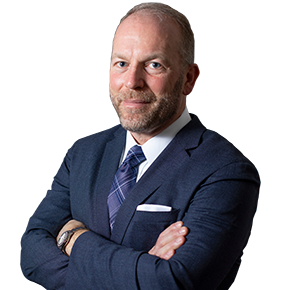Rotator Cuff Repair Rehabilitation
Post-operative rehabilitation for a rotator cuff injury typically involves a structured program aimed at restoring strength, range of motion, and function to the shoulder. While specific protocols may vary based on the severity of the injury, surgical technique, and individual patient factors, here are some general keys to post-operative rotator cuff rehabilitation:
- Early immobilization and protection: Following surgery, the shoulder may be immobilized in a sling to allow for initial healing. It’s crucial to follow the surgeon’s guidelines regarding how long to keep the shoulder immobilized and how to gradually reintroduce movement. The length of this can vary by surgeon and size of tear. The balance is between stiffness, which can occur with prolonged immobilization, and stressing the repair, which can occur with excessive movement. Typically, I will immobilize patients in a sling for 4 weeks.
- Passive range of motion exercises: Once cleared by the surgeon, passive range of motion exercises can begin. These exercises involve using the uninjured arm, a therapist, or assistive devices to gently move the injured arm through its range of motion without activating the muscles of the rotator cuff. I typically start passive range of motion the first week unless a graft was used and then I wait an extra 2 weeks to start.
- Gradual progression to active range of motion exercises: As healing progresses, active range of motion exercises can be introduced. These exercises involve the patient using their own muscles to move the shoulder through its range of motion, without any external assistance. While I will start pendulum exercises right away which can be classified as an active assisted motion, all other active assisted motions (ie: lying down and lifting the arm overhead while assisting with the other hand or with a stick and using shoulder pulleys to help lift the arm) are only started at 4 weeks from surgery.
- Strengthening exercises: Strengthening the muscles of the rotator cuff and the surrounding shoulder muscles is essential for restoring function and stability to the shoulder. Initially, these exercises may involve light resistance or isometric contractions and gradually progress to resistance exercises using bands, weights, or machines. I usually start this at 8 weeks for internal and external rotation strengthening and only start forward elevation strengthening at 12 weeks if normal scapulohumeral rhythm has been restored. This means the shoulder blade does not hike up as one tries to elevate the arm. If there is abnormal scapulohumeral rhythm, I will wait until this is restored to start forward elevation strengthening.
- Scapular stabilization exercises: The shoulder blade (scapula) plays a crucial role in shoulder function and stability. Rehabilitating the muscles that control scapular movement and stability is important for ensuring proper shoulder mechanics and reducing the risk of re-injury. This can start as well at 8 weeks from surgery.
- Functional exercises: As strength and range of motion improve, rehabilitation should focus on functional activities that mimic the patient’s daily or sports-related movements. This may include exercises that involve reaching overhead, lifting objects, or throwing. These usually start at about 4 months after surgery.
- Gradual return to activities: Return to activities or sports should be gradual and guided by the patient’s progress, strength, and range of motion. It’s essential to avoid rushing the process to prevent setbacks or re-injury.
- Close communication with healthcare providers: Throughout the rehabilitation process, ongoing communication with the orthopedic surgeon, physical therapist, or other healthcare providers is essential. They can monitor progress, adjust the rehabilitation program as needed, and address any concerns or complications that may arise. While the general guidelines are important, tailoring the rehabilitation to the level where each individual patient is in the rehab process is very important.
At Total Orthopedics and Sports Medicine we have orthopedic surgeons with vast experience performing rotator cuff repairs, and extensive experience on guiding patients with their rehabilitation process. Contact us today to learn how we can help get you, back to you.







 Website Design by
Website Design by